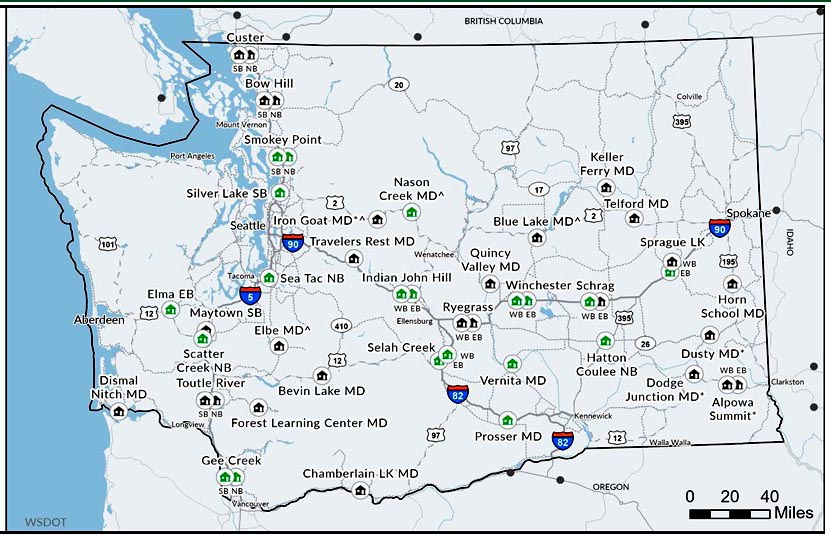Washington state has 42 safety rest areas. These rest areas differ in their capacity, facilities, and accessibility in each traffic direction. Some are located at the most traffic-dense corridors such as I-5 and I-90, whereas others are on less traffic-dense state routes. This project provided information on Washington rest area use and user experiences and evaluated the impacts of rest areas on traffic safety.
Public roadside rest areas were developed largely to alleviate motorist fatigue and reduce instances of fatigue-related crashes by providing safe parking areas for tired drivers. Early evidence has suggested that rest areas are useful in preventing such crashes.
This work involved close collaboration with WSDOT Capital Facilities, Safety Rest Area personnel. The researchers used WSDOT Washington state crash data in the period of 2010 to 2020 comprising 182,276 crashes, of which 9,640 involved trucks.
To estimate the impacts of rest areas on the number of crashes, the researchers used a regression discontinuity design to analyze the number of crashes that occurred upstream and downstream of each safety rest area. On average, they found an estimated reduction of 2.94 crashes per rest area over the study period. These effects were heterogeneous across rest areas. The northbound Toutle River rest area on I-5 was found to contribute the most to crash reduction, with a total estimated reduction of 39.65 crashes over the ten-year study period, or approximately four crashes avoided per year.
This analysis was accompanied by an online Safety Rest Area Dashboard to provide WSDOT with information on facilities and the results of a rest area survey. The rest area user survey is described in a companion report prepared by WSDOT.
The researchers concluded that understanding how rest areas contribute to traffic safety can help WSDOT prioritize safety rest area infrastructure spending. Such evaluations should be conducted in conjunction with an analysis of the costs and other benefits of safety rest areas.
Report: WA-RD 921.1
Authors:
Eric Jessup
Jake Wagner
WSU School of Economic Sciences
Sponsor: WSDOT
WSDOT Technical Monitor: Alix Berg
WSDOT Project Manager: Doug Brodin

